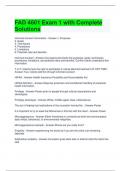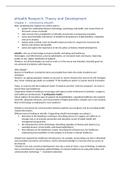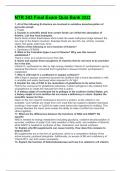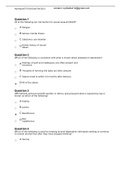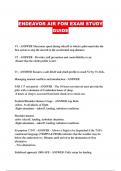Tentamen (uitwerkingen)
FAD 4601 Exam 1 with Complete Solutions
- Vak
- Instelling
FAD 4601 Exam 1 with Complete Solutions Informed consent information - Answer-1. Purposes 2. Goals 3. Techniques 4. Procedures 5. Limitations 6. Potential risks and benefits Informed consent - Answer-Counselors tell clients the purposes, goals, techniques, procedures, limitations, and pot...
[Meer zien]
